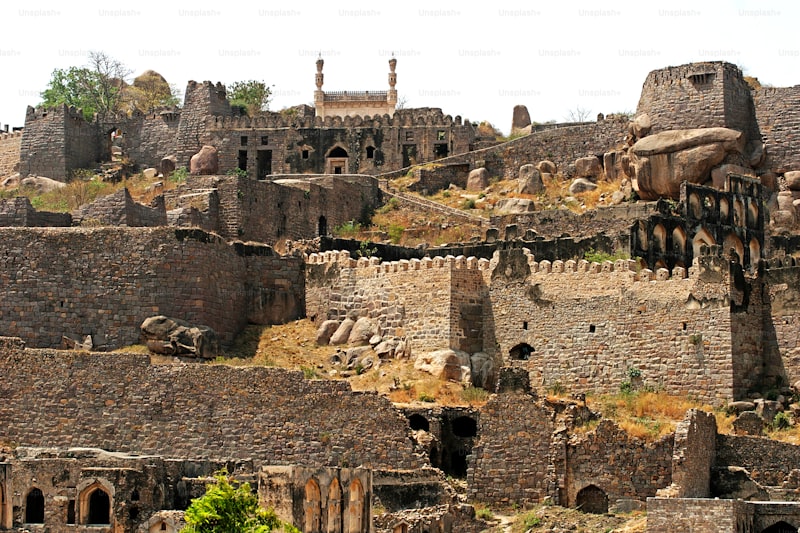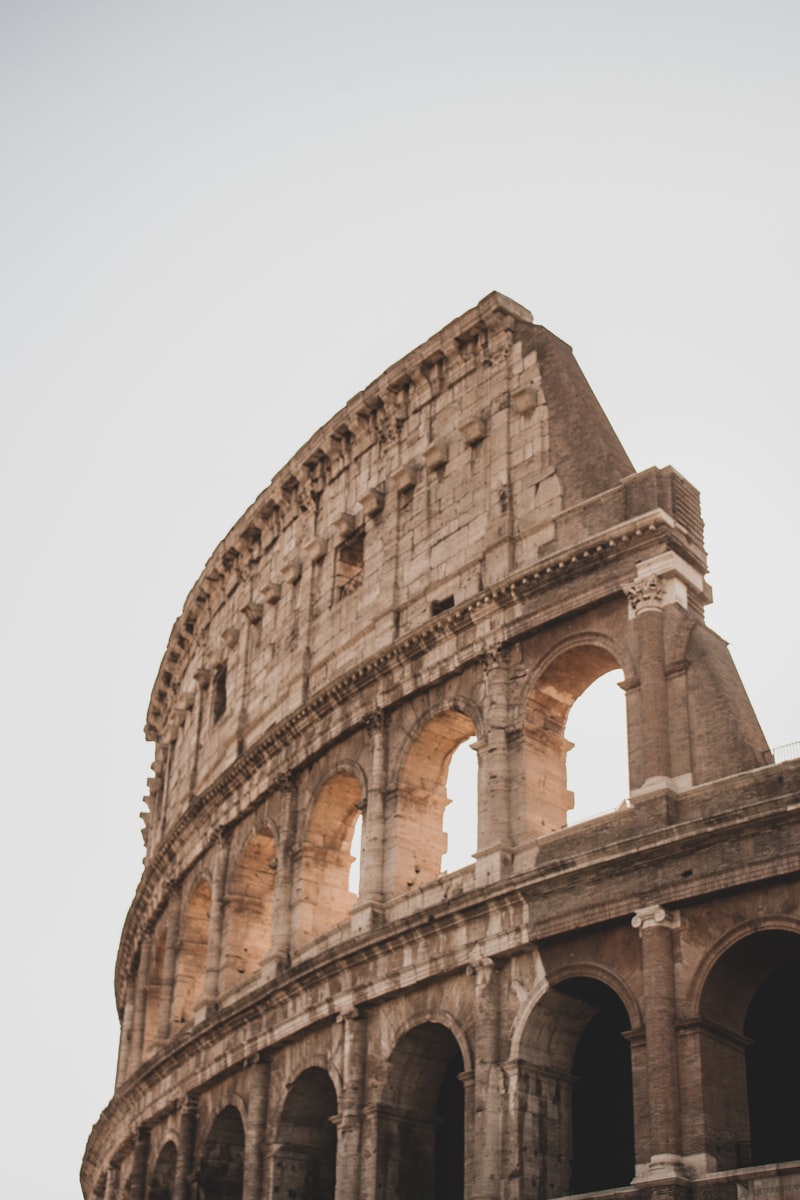
Imagine standing amidst the grandeur of the Colosseum, an architectural marvel that once hosted gladiatorial contests and spectacular public spectacles. This iconic amphitheater, built over 2,000 years ago, stands as a testament to Roman engineering prowess and remains one of the most visited landmarks in the world. Its massive stone walls and intricate arches evoke a sense of wonder and admiration, leaving visitors spellbound by its sheer scale and historical significance.
Venture further into the heart of the city and discover the Pantheon, a true architectural gem that showcases the genius of Roman design. Originally built as a temple to the Roman gods, the Pantheon’s massive dome with its oculus at the top is a feat of ancient engineering, perfectly illustrating the Romans’ understanding of balance and proportion. As you stand beneath the open sky through the oculus, you can’t help but marvel at how such a structure was constructed without modern technology.
Stroll along the ancient Roman Forum, once the bustling center of political, religious, and commercial life in the empire. Here, amidst the ruins of temples, basilicas, and government buildings, you can almost hear the echoes of ancient speeches and debates that shaped the course of history. The Forum Romanum, as it was known, serves as a poignant reminder of Rome’s former glory and the architectural splendor that defined an era.
Not far from the Forum lies the majestic Circus Maximus, where chariot races once drew thousands of cheering spectators. This sprawling arena, the largest of its kind in ancient Rome, hosted thrilling races that captivated the city’s populace and highlighted the Romans’ love for entertainment and competition.
In Rome, every cobblestone street, every crumbling ruin tells a tale of an empire that once ruled the known world. From the towering columns of the Temple of Saturn to the intricate carvings of the Arch of Constantine, the city is a living museum that invites visitors to step back in time and experience the grandeur of Ancient Rome firsthand.
Unveiling Rome’s Hidden Treasures: Ancient Marvels You Didn’t Know Existed
Rome, known for its iconic landmarks like the Colosseum and Vatican City, holds hidden treasures waiting to be discovered. Beyond the bustling streets and famous sites lie ancient marvels that often escape the limelight. These hidden gems offer a glimpse into Rome’s rich history and cultural tapestry, showcasing lesser-known yet equally awe-inspiring attractions.
Imagine stumbling upon a quiet alley and finding the Capuchin Crypt, adorned with skeletal remains arranged in intricate patterns—a hauntingly beautiful testament to artistic expression in death. This macabre yet fascinating site invites visitors to contemplate life and mortality in a unique way.
Further into the heart of Rome, nestled on Aventine Hill, lies the Keyhole of Rome—a small, unassuming door that frames a breathtaking view of St. Peter’s Basilica. Peering through this keyhole feels like discovering a hidden portal to another world, where the modern cityscape perfectly aligns with the ancient wonder of Vatican City.
For those intrigued by ancient engineering feats, the Baths of Caracalla offer a grand spectacle. Once a sprawling complex of public baths, these ruins now stand as a testament to Roman ingenuity and luxury. Walking among the towering remnants, visitors can almost hear the echoes of ancient Roman citizens discussing politics and philosophy in steam-filled chambers.
Venturing outside the city center, the Catacombs of Domitilla beckon explorers to descend into a labyrinthine network of underground passageways. These catacombs served as burial grounds and hideaways for early Christians, adorned with frescoes that depict scenes of faith and daily life in ancient Rome.
Rome’s hidden treasures not only enrich the visitor’s experience but also unveil the layers of history that have shaped this vibrant city. Each discovery—from the eerie beauty of the Capuchin Crypt to the architectural marvels of the Baths of Caracalla—invites reflection and awe, offering a deeper appreciation for Rome’s enduring legacy.
This article aims to captivate readers by highlighting lesser-known aspects of Rome’s historical and cultural heritage while maintaining an engaging and informative tone.
Exploring Rome’s Forgotten Wonders: Ancient Marvels Off the Beaten Path
Have you ever wondered about the hidden treasures of Rome beyond the iconic Colosseum and Vatican City? Rome, known for its rich history and architectural marvels, holds a plethora of lesser-known ancient wonders waiting to be discovered. These hidden gems offer a glimpse into Rome’s lesser-explored history, away from the bustling crowds and tourist hotspots.
One such marvel is the Baths of Caracalla, an ancient Roman bath complex built in the 3rd century AD. Once a lavish center for socializing and bathing, today, its towering ruins stand as a testament to Roman engineering and grandeur. Walking through its vast halls and imagining the bustling life of ancient Romans provides a profound sense of connection to the past.
Venturing further, the Catacombs of Domitilla reveal a different aspect of Roman life, underground. These vast underground burial chambers house intricate frescoes and tombs of early Christians, offering a unique perspective on ancient religious practices and beliefs.

For those fascinated by engineering feats, the Aqua Claudia aqueduct offers a remarkable experience. Built by Emperor Claudius in the 1st century AD, this aqueduct once supplied water to the city of Rome, showcasing Roman mastery of aqueduct construction and hydraulic engineering.
Exploring these forgotten wonders not only enriches your understanding of Rome’s history but also provides a quieter, more intimate experience compared to the crowded tourist sites. Each site tells a story of ancient Roman life, from leisure activities to religious practices, offering a deeper appreciation for the city’s enduring legacy.
Next time you visit Rome, consider stepping off the beaten path to uncover these hidden marvels. They promise to amaze and inspire, offering a glimpse into a world often overshadowed by more famous landmarks. Rome’s forgotten wonders are waiting to be explored – are you ready to uncover their secrets?
This article highlights lesser-known ancient sites in Rome, emphasizing their historical significance and inviting readers to explore beyond the typical tourist destinations.
The Architectural Marvels of Ancient Rome That Still Amaze Today
Imagine standing amidst the towering arches of the Colosseum, where gladiators once battled before roaring crowds. Built in 70-80 AD, this amphitheater could seat up to 80,000 spectators, showcasing Rome’s prowess in engineering and entertainment. Its elliptical design and intricate system of corridors and trapdoors remain a marvel of ancient engineering, inviting visitors to ponder its sheer scale and historical significance.
Equally captivating is the Pantheon, renowned for its perfectly proportioned dome and oculus that bathes its interior in natural light. Originally constructed in 126 AD as a temple for Roman gods, it stands as the world’s largest unreinforced concrete dome, a testament to Roman mastery of materials and architectural form. Its enduring beauty and structural integrity continue to intrigue architects and historians alike, offering a glimpse into Rome’s advanced construction techniques.
Venture to the Roman Forum, once the heart of ancient Rome’s political and social life. Here, visitors can wander among the ruins of temples, basilicas, and government buildings that once defined Roman civic life. Each column and archway tells a story of the empire’s rise and fall, providing a tangible link to its past glory.
Beyond these iconic landmarks, Rome’s aqueducts showcase its mastery of water supply and distribution. These sprawling networks of stone channels and arches stretched for miles across the empire, delivering fresh water to cities and settlements—a feat of engineering that supported Rome’s growth and prosperity.
As we marvel at these architectural achievements today, we are reminded of Rome’s enduring legacy in shaping the world we live in. Each stone and archway tells a story of innovation, craftsmanship, and the pursuit of greatness—a testament to what humanity can achieve when imagination meets skill.
Secrets of Rome’s Ancient Marvels: Discovering History’s Footprints
Roaming the bustling streets of Rome today, one cannot escape the palpable echoes of its ancient marvels. From the grandeur of the Colosseum to the intricate architecture of the Pantheon, each monument whispers tales of a bygone era etched deeply into the city’s fabric. These structures, more than just stone and mortar, are gateways to understanding the rich tapestry of Roman history.
Take a stroll through the Colosseum, once the heart of gladiatorial combat and public spectacles. Its towering arches and labyrinthine corridors evoke a sense of awe, revealing the engineering prowess of ancient Romans. Imagine the cheers of the crowds and the clash of swords echoing through time, as you stand where emperors once presided over dramatic displays of power.
Across town, the Pantheon stands as a testament to Roman ingenuity. Its massive dome, an architectural feat of the ancient world, still stands as the largest unreinforced concrete dome ever built. Step inside and witness the interplay of light and shadow through the oculus, a design marvel that continues to inspire awe and reverence.
Venture further to the Roman Forum, once the political and religious heart of ancient Rome. Here, amidst the ruins of temples and basilicas, one can almost hear the debates of senators and the prayers of citizens. Each column and arch tells a story of triumph and turmoil, offering glimpses into daily life in the Roman Empire.
Exploring Rome’s ancient marvels is like unraveling a mystery—a journey through time where every step unveils new insights into the past. These monuments not only preserve history but also challenge us to ponder the legacy of one of the world’s greatest civilizations. As you wander through these historic sites, let the secrets of Rome’s ancient marvels ignite your curiosity and appreciation for the enduring power of human creativity and achievement.
Journey Through Time: Rediscovering Rome’s Ancient Marvels
One of the most iconic symbols of ancient Rome is the Colosseum. This grand amphitheater, with its imposing facade and labyrinthine corridors, stands as a testament to the architectural ingenuity of the Roman Empire. Built to host thrilling gladiatorial contests and public spectacles, the Colosseum echoes with the cheers of ancient crowds and the clash of swords. Standing within its walls, you can almost feel the pulse of history.
Adjacent to the Colosseum lies the Roman Forum, once the heart of political and social life in ancient Rome. Imagine strolling through its ancient streets, surrounded by the remnants of temples, basilicas, and government buildings. Here, Julius Caesar once walked, and Cicero once spoke—the echoes of their deeds reverberating through time.
For a glimpse into the spiritual life of ancient Romans, a visit to the Pantheon is a must. This architectural marvel, with its perfectly proportioned dome and oculus that lets in a beam of sunlight, showcases the engineering prowess of its time. Originally built as a temple to the Roman gods, it now serves as a church, a symbol of continuity amidst change.
Venturing beyond the city center, the Appian Way offers a journey into the Roman countryside. This ancient road, lined with crumbling tombs and Roman baths, was once the gateway to the vast Roman Empire. Walking along its worn stones, you can sense the footsteps of legionnaires and merchants who traveled its length centuries ago.
Each of these ancient marvels tells a part of Rome’s story—a story of innovation, conquest, and cultural richness. Whether you’re an avid history buff or a casual traveler, Rome’s ancient sites offer a glimpse into a world long past, where the echoes of ancient voices still resonate today.
From Colosseum to Catacombs: Rome’s Top 5 Ancient Marvels
1. The Colosseum: Standing majestically as a symbol of ancient Roman engineering, the Colosseum is a marvel of architectural prowess. Built in AD 70-80, this amphitheater once hosted gladiatorial contests and public spectacles, drawing crowds from across the Roman Empire. Imagine the roar of the crowds and the clash of swords echoing through its corridors.
2. The Pantheon: Originally constructed as a temple for Roman gods, the Pantheon is renowned for its stunning dome, which remains the world’s largest unreinforced concrete dome. Built by Emperor Hadrian around AD 126, it is a testament to Roman ingenuity and architectural brilliance. The oculus at the center of the dome allows sunlight and rain to filter dramatically into the temple’s interior.
3. Roman Forum: Once the heart of ancient Rome’s political and social life, the Roman Forum is a sprawling complex of ruins that offers a glimpse into daily Roman life. Here, visitors can wander among the remnants of temples, basilicas, and government buildings that once formed the center of Roman civilization.
4. Baths of Caracalla: Built between AD 212 and 216, the Baths of Caracalla were one of ancient Rome’s largest and most luxurious thermal bath complexes. Spanning over 25 acres, these baths were a social hub where Romans of all classes could relax, exercise, and socialize amidst grand architecture and intricate mosaics.

5. Catacombs of Rome: Delving beneath the city streets, the Catacombs of Rome are a labyrinth of underground tunnels and burial chambers that served as early Christian cemeteries. These eerie yet fascinating catacombs reveal insights into early Christian life and burial practices, with intricate frescoes and inscriptions adorning the walls.
Beyond the Forum: Rome’s Lesser-Known Ancient Marvels Revealed
Step off the beaten path, and you’ll discover the Baths of Caracalla, a monumental complex built in the 3rd century AD. These baths were not just for bathing but were social hubs where Romans gathered, exercised, and discussed politics. The sheer size and grandeur of the Baths of Caracalla rival the more famous sites, offering a glimpse into daily life in ancient Rome.
Venture further to the Appian Way, one of the earliest and strategically most important Roman roads. Imagine walking on the same stones that ancient Romans trod as they traveled from Rome to Brindisi. Along this road, you’ll find the Catacombs of San Callisto, an underground burial site where early Christians buried their dead and worshipped in secret.
For those intrigued by ancient engineering, the Aqueduct Park is a must-visit. Rome’s aqueducts, marvels of Roman engineering, once supplied the city with water. Today, you can explore the remains of these aqueducts, marveling at their scale and precision.
Rome’s lesser-known marvels offer a deeper connection to its past. Each stone tells a story, each monument whispers tales of triumph and turmoil. These sites may not be as famous as the Colosseum, but they are equally astounding. They invite you to dig deeper into Rome’s history, beyond what you read in textbooks or see in movies.
So, next time you visit Rome, venture beyond the familiar. Let the city surprise you with its lesser-known ancient marvels, each one a testament to Rome’s enduring legacy in the annals of history.
Frequently Asked Questions
What are the most famous ancient marvels in Rome
Discover the most renowned ancient marvels in Rome with our concise guide. Explore iconic landmarks like the Colosseum, Pantheon, and Roman Forum, each offering a glimpse into the city’s rich history and architectural brilliance.
What role did the Roman Forum play in ancient Roman society
Discover the pivotal role of the Roman Forum in ancient Roman society. Serving as the heart of political, religious, and commercial life, it was the center of governance and public affairs. Learn how this iconic plaza shaped the cultural and social fabric of Rome.
Which ancient Roman structures can still be visited today
Discover which ancient Roman structures are still accessible today with our concise FAQ. Learn about iconic sites like the Colosseum, Pantheon, and Roman Forum, exploring their historical significance and current visitor information.
What was the purpose of the Roman aqueducts
Discover the purpose of Roman aqueducts, essential structures designed to supply cities with fresh water from distant sources. Learn how these engineering marvels enabled urban growth, sanitation improvements, and public health advancements in ancient Rome.
How were the Colosseum and Pantheon constructed in ancient Rome
Learn about the construction methods of the Colosseum and Pantheon in ancient Rome. Discover the ingenious architectural techniques employed, from the innovative use of concrete and precise engineering to the skilled craftsmanship of ancient Roman builders.



